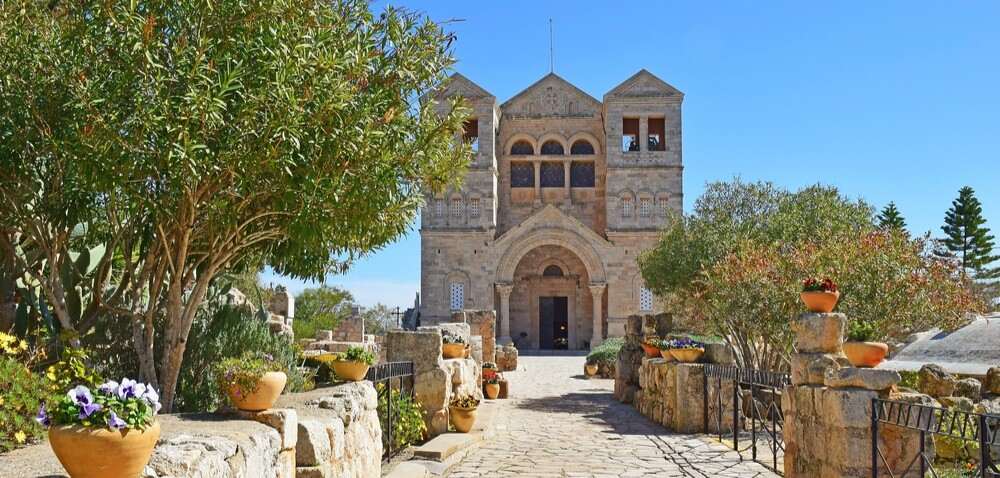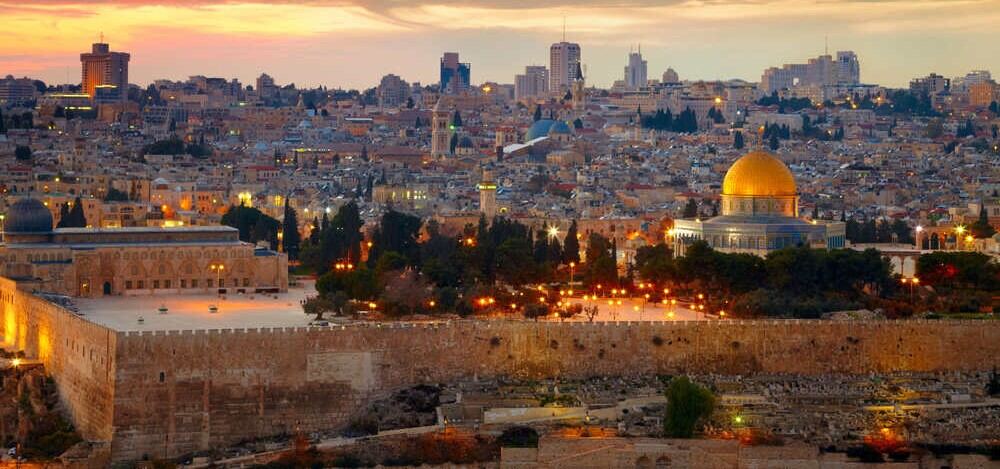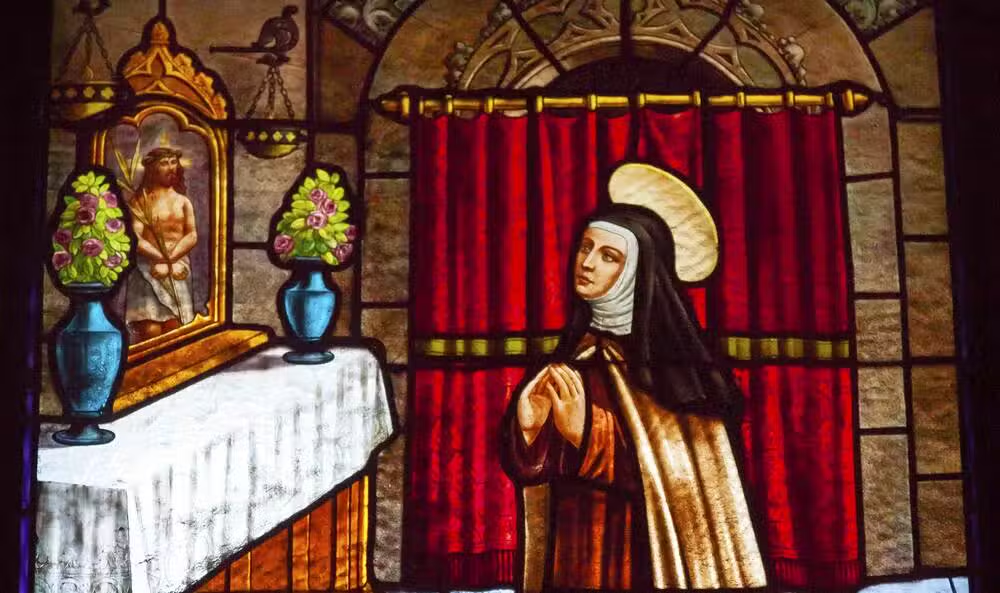The desert occupies a key place in biblical geography. It is not a marginal landscape, but a territory where some of the most important episodes of the Old and New Testaments take place. From the sands of Sinai to the arid slopes of Judea, these spaces marked the course of the people of Israel towards the Promised Land.
In ancient times, the desert functioned as a natural boundary between fertile regions, but also as a crossing zone for the trade routes that linked Egypt, Arabia, and Mesopotamia. It was a difficult territory: water was scarce, extreme temperatures abounded, and life was barely sustained around oases. However, precisely because of these conditions, the desert became a privileged setting for the great biblical stories.
The people of Israel crossed the Sinai Desert for forty years after leaving Egypt on their way to the Promised Land. In that environment, they received the laws that consolidated their identity and established their alliance as a nation chosen by God. Further north, the Judean Desert, near the Dead Sea, appears in the Gospels as the place where John the Baptist preached and where Jesus spent time in retreat before beginning his public life. In addition to these two great deserts, the Bible mentions other fundamental arid spaces in the Holy Land such as the Negev or Arabah.
Its landscape—marked by stone, wind, and silence—has preserved to this day numerous places that commemorate those episodes narrated in the Holy Scriptures. Today we will present 5 biblical sites in the desert near the Promised Land.
1. The Well of Abraham (Beersheba, Israel)

By Daniel Baránek, CC BY-SA 3.0, https://commons.wikimedia.org/w/index.php?curid=7423650
The Well of Abraham is located in the city of Beersheba, situated north of the Negev desert, in present-day southern Israel. Its name means in Hebrew “well of the oath” or “well of the seven” (Be’er Sheva) and is associated with the patriarchal accounts of Genesis, where it is mentioned as one of the places where Abraham and later Isaac established covenants and dug wells of water.
Beersheba appears several times in the Book of Genesis:
-
In Genesis 21:22-34, Abraham and Abimelech, king of Gerar, make a non-aggression pact. As a sign of the agreement, Abraham gives seven ewes and digs a well, which is given the name Be’er Sheva, “well of the oath” or “well of the seven.”
-
In Genesis 26:23-33, his son Isaac repeats the gesture: he digs wells again in the same region, also after making a pact with the Philistines.
-
Beersheba is then mentioned as the southern limit of the territory of Israel (“from Dan to Beersheba”), a frequent expression in biblical texts to refer to the entire extent of the country.
The well, therefore, represents a symbol of agreement, stability, and survival in an arid region of the Promised Land where access to water was vital.
The archaeological site of Beersheba is part of the Tel Be’er Sheva National Park, declared a UNESCO World Heritage Site in 2005, as a well-preserved example of a planned biblical city. In the site, you can see an underground water storage system, houses, and walls from the Israelite period (10th century BC).
The well that is known today as “Well of Abraham” is located outside the archaeological mound, at the modern entrance to Beersheba, next to the Abraham’s Well International Visitors Center (Abraham’s Well International Visitors Center). The well is about 12 meters deep, and its current structure probably dates from later periods (Roman, Byzantine, or even Ottoman), although it is traditionally associated with the well mentioned in Genesis.
Today it is a tourist and commemorative site, where the figure of Abraham is presented as the patriarch of the three monotheistic religions—Judaism, Christianity, and Islam—with a presence in the Promised Land.
2. Mount Sinai (Sinai Peninsula, Egypt)
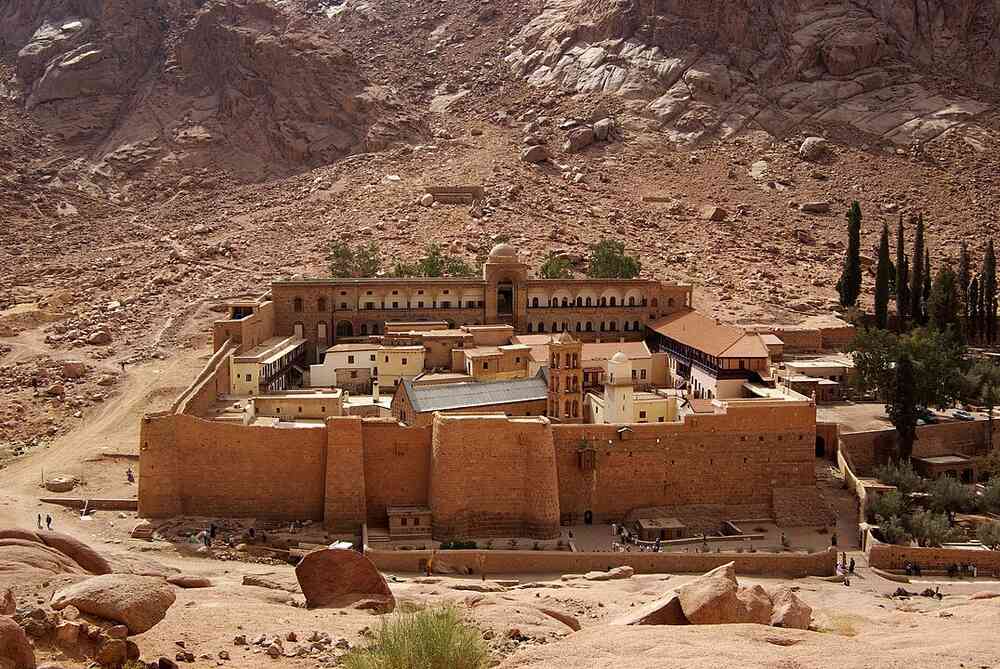
By Berthold Werner – Own work, CC BY-SA 3.0, https://commons.wikimedia.org/w/index.php?curid=12215773
The Mount Sinai—also known as Jebel Musa (“Mount of Moses”)—is located in the Sinai Peninsula, in present-day Egypt, within an arid mountainous area that is part of the Sinai Desert. Biblical tradition identifies it as the place where Moses received the Tablets of the Law after the Israelites left Egypt.
Mount Sinai is one of the most important settings in the Book of Exodus, where it is narrated that the people of Israel camp at the foot of the mountain and Moses goes up to meet God. There he receives the Ten Commandments, which establish the basis of the covenant between God and the people. The text describes the mountain covered in smoke, thunder, and lightning, images that accentuate the solemnity of the event.
The mountain rises to about 2,285 meters above sea level and is part of a mountain range that includes Mount Saint Catherine, the highest point in Egypt (2,642 m). The area is characterized by its desert climate, with large temperature variations and sparse vegetation.
The ascent to Mount Sinai is made by two main routes. The Path of the 3,750 Steps, carved by monks. And the Camel Trail, longer but less steep.
At the foot of Mount Sinai is the Monastery of Saint Catherine, one of the oldest functioning Christian monasteries in the world. It was built by order of the Emperor Justinian between the years 548 and 565 AD, around the chapel of the Burning Bush, where according to tradition Moses saw the bush that burned without being consumed (Exodus 3).
The monastery belongs to the Greek Orthodox Church and has been in uninterrupted operation for more than 1,400 years. Inside, there is a Byzantine basilica, a mosque built in the 11th century (a sign of the religious coexistence of the place), and a fortified pier that protected it from incursions.
Its library is one of the oldest in Christianity and houses thousands of manuscripts in Greek, Arabic, Syriac, Ge’ez, and other languages. It is the second most important collection in the world after that of the Vatican. The monastery also holds a valuable collection of Byzantine icons and liturgical objects.
In 2002, the Monastery of Saint Catherine and its natural environment were declared a UNESCO World Heritage Site, both for their historical-religious value and for their architecture and desert landscape of great beauty.
3. Mount Nebo (Jordan)
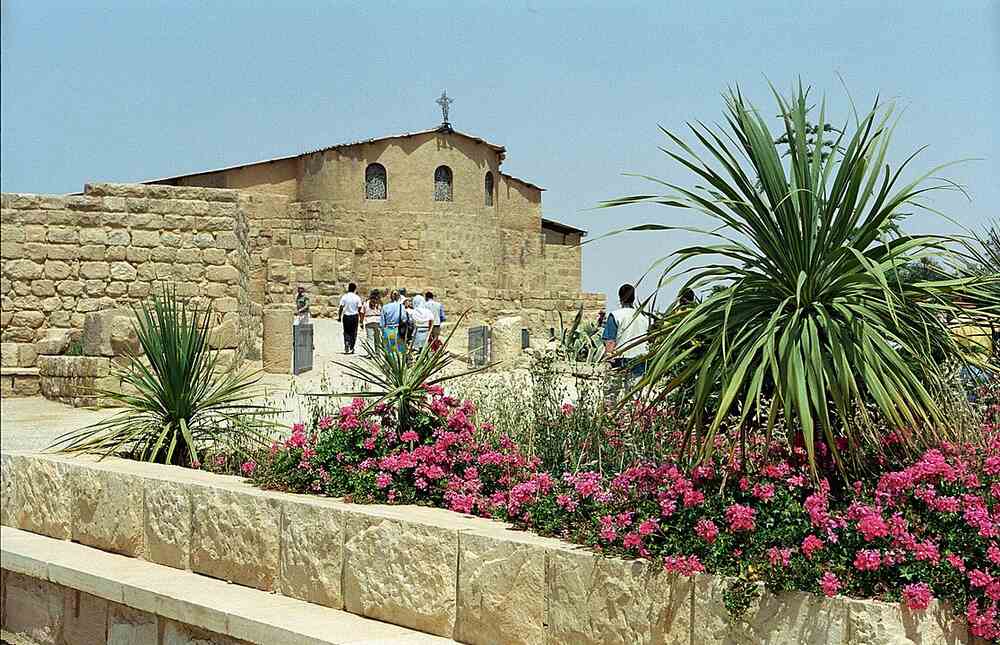
By Jerzy Strzelecki – Own work, CC BY-SA 3.0, https://commons.wikimedia.org/w/index.php?curid=3353188
The Mount Nebo is one of the most emblematic places in the Holy Land, both for its historical value and for its archaeological importance. It is located in Jordan, near the city of Madaba, about 800 meters above sea level. From its summit, on clear days, you can see the Jordan Valley, the Dead Sea and, in the distance, Jerusalem.
According to the Bible (Deuteronomy 34:1-5), Mount Nebo is the place where Moses saw the Promised Land before dying. God allowed him to contemplate the extension of Canaan from there, although he did not allow him to enter. For this reason, the site is considered the final point of the Exodus and a symbol of the fulfillment of the divine promise to Israel.
On the summit, the remains of a Byzantine basilica from the 4th century were discovered, built to commemorate the death of Moses. Over time, it was expanded and decorated with mosaics that are still partially preserved. These represent scenes of shepherds, animals, and Christian symbols.
Today, the place is administered by the Franciscans of the Custody of the Holy Land, who have built a modern sanctuary on the ruins of the ancient church. Inside, the original mosaics are preserved, and you can visit a panoramic platform with a large cross with a bronze serpent, inspired by the episode of the serpent of Moses (Numbers 21:8-9).
- For more information about this Holy Place, visit the website of the Custody of the Holy Land.
- Location: QP9G+67P Khirbet al-Mukhayyat, Jordan.
4. Jordan River (Al-Maghtas, Jordan)
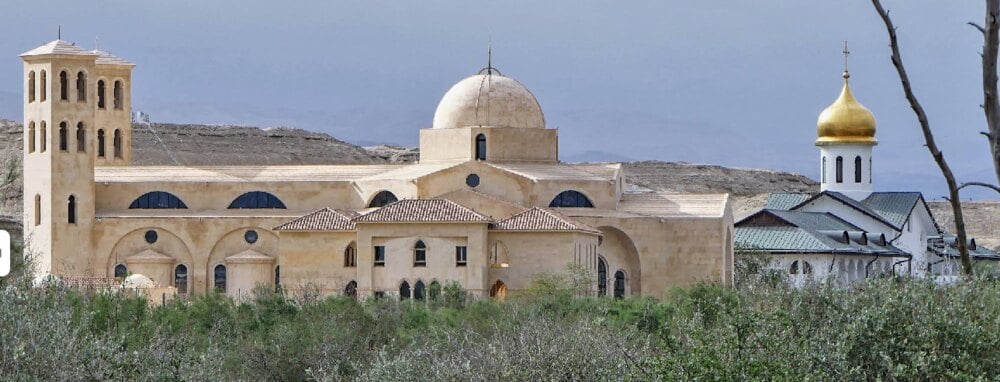
The Jordan River is one of the best-known and most symbolic watercourses in the Middle East. It originates on the slopes of Mount Hermon, on the border between Lebanon, Syria, and Israel, and runs about 250 kilometers south until it flows into the Dead Sea, the lowest point on Earth (about 430 meters below sea level).
In the Bible, the Jordan appears in multiple fundamental episodes:
-
It was the natural boundary that the Israelites crossed to enter the Promised Land, guided by Joshua (Joshua 3:14-17).
-
In its waters, Jesus was baptized by John the Baptist, an event that marked the beginning of his public life (Matthew 3:13-17).
In January 2025, the Sanctuary of the Baptism of the Lord was inaugurated, with land donated by the King Abdullah II of Jordan. Today, the site houses the church (sanctuary), two monasteries for friars and nuns, gardens, a visitor center, parking, a trail, and the Hill of the Cross, which offers stunning views of the mountains of the Holy Land.
With an area of 2200 square meters, the church is one of the largest in the Middle East. It has acquired a similar importance to the Church of the Annunciation, of the Nativity, and of the Holy Sepulchre. With a capacity for more than 1000 worshipers, it hosts the annual pilgrimage to Al-Maghtas every January. During this time, masses, prayers, and the renewal of baptismal vows are celebrated, all in commemoration of the feast of the baptism of Christ.
The friars and nuns of the Institute of the Incarnate Word are responsible for maintaining the site, welcoming pilgrims, and offering prayers and Masses.
- For more information about this church, visit the website of the Sanctuary of the Baptism of the Lord.
- Location: Baptism site of Jesus Christ Al Maghtas, Jordania.
5. Jericho (West Bank, Jordan)

By Diego Delso, CC BY-SA 3.0, https://commons.wikimedia.org/w/index.php?curid=16853307
Jericho is one of the oldest cities in the world and one of the most emblematic places in the Holy Land. It is located in the Jordan Valley, about 27 kilometers from Jerusalem, in present-day West Bank, and is located more than 250 meters below sea level, which makes it the lowest inhabited city on the planet.
The archaeological remains found in Tell es-Sultan, the ancient mound of Jericho, show that it was one of the first fortified cities in the world, with walls and a stone tower dating from 8000 BC. This discovery made Jericho a key site for the study of the origins of urban life.
In the Bible, Jericho appears mainly in the Book of Joshua, as the first city conquered by the Israelites upon entering the Promised Land. According to the account (Joshua 6:1-20), the walls of Jericho fell after the people marched around them for seven days to the sound of trumpets.
It is also mentioned in the Gospels, as the place where Jesus restored sight to the blind Bartimaeus (Mark 10:46-52) and visited the house of Zacchaeus, the tax collector (Luke 19:1-10). Also there is The Mount of Temptation, where, according to the Gospel of Matthew (4:1-11), Jesus was tempted by the devil after fasting for forty days. On its slope stands the Monastery of the Temptation, built in the 6th century and still inhabited by Orthodox monks.
In Jericho, the Franciscans guard the Church of the Good Shepherd, also known as the Parish of the Good Shepherd. It is located in the modern center of Jericho and functions as a parish for the small local Christian community, composed mainly of Palestinian Arabs. It was built in the 20th century, on land where the Franciscans settled in the 19th century.
The temple has a simple but luminous design, with stained glass windows that represent evangelical scenes, including that of the Good Shepherd, a symbol of Christ who guides and protects his flock. This church reminds us that for Bartimaeus as for Zacchaeus, Jesus was indeed an authentic Good Shepherd.
Next to the church there is a Franciscan school and convent, which play an important educational and social role in the area.
- For more information about this holy place, visit the website of the Custody of the Holy Land.
- Location: VF66+CPR Jericho.
If you want to visit these churches, remember that your Catholic Mass Times app will be your best travel companion. It will help you find local Mass schedules, Confession services, and Adoration times, ensuring that your spiritual pilgrimage is always connected to the sacraments. Download it now.
These five places near the Promised Land form an essential route to understand biblical history and the origins of our faith. Each site preserves concrete traces of episodes that marked the relationship between the people of Israel and God, and that were later assumed by Christianity.
In Beersheba, Abraham’s well recalls the first covenants and the beginning of nomadic life in the desert. Mount Sinai evokes the giving of the Law to Moses, an event that shaped the moral and spiritual identity of the Hebrew people. From the summit of Mount Nebo, Moses contemplated the Promised Land, a symbol of the fulfillment of the promise and the transition to a new destiny. The Jordan River, the scene of Jesus’ baptism, represents passage and renewal, while Jericho shows the Good Shepherd giving his life for his sheep to lead them to the true Promised Land, Heaven.
Visiting these places allows Catholics to physically walk through the settings of the Exodus, the Prophets, and the Gospels.
To make the most of your pilgrimage, we recommend bringing a guidebook with explanations and information about the sacred sites, along with meditations, Scripture passages, and prayers to help you live this journey in a true spirit of contemplation.
It is highly recommended that you travel through the Holy Land with your Bible. You could read the texts beforehand to prepare your heart, or during your visit to contemplate and meditate better. How wonderful it would be if you could go with a group of pilgrims accompanied by a priest at the head to celebrate Holy Mass in the holy places and assist you spiritually on your pilgrimage.
Are you planning a trip and would like to visit churches at your destination? Take a look at our other articles to discover inspiring places of faith in the Holy Land:
- 10 Must-See Churches in the Holy Land: A mini guide with 10 churches every Catholic should visit on a pilgrimage through the Holy Land, inspired by the Mysteries of the Rosary.
- 7 Holy Places to Visit in Jerusalem: The most important and decisive sites in the life of Jesus —and of our faith— in Jerusalem.
- Following Jesus: 3 Sites in Judea: Walk in the footsteps of Jesus and Saint John the Baptist across the region of Judea.
- Mount Tabor and 9 Churches in Galilee: We tour the places where the Lord was born and grew up and began his public ministry.
What is the Promised Land and where is it Located?
The Promised Land is the region that, according to the Bible, God promised to Abraham and his descendants. Historically, it corresponds to the area that encompasses much of Israel, Palestine, and Jordan. It represents the final destination of the people of Israel after their passage through the desert and symbolizes the fulfillment of the divine promise and the arrival to a new life.
What is the Significance of the Desert in the Bible?
The desert represents the place of testing, silence, and transformation. It was the scene of key episodes such as the Exodus, the giving of the Law, and the temptations of Jesus. It is also the space where the biblical people learned to trust and advance towards the Promised Land.
Where is Mount Sinai Located and why is it Important?
Mount Sinai is in the Sinai Peninsula, Egypt. According to biblical tradition, Moses received the Ten Commandments there. Today, at the foot of the mountain stands the Monastery of Saint Catherine, one of the oldest Christian centers in the world.
Is it Possible to Visit the Place where Jesus Was Baptized?
Yes. The site of Jesus’ Baptism, known as Al-Maghtas, is located on the eastern bank of the river, in Jordan. It is a UNESCO World Heritage Site and one of the most visited destinations by Christian pilgrims.
What Can You See in Jericho Today?
In Jericho, archaeological remains of ancient walls, the Mount of Temptation with its Orthodox monastery, the fountain of Elisha, and the Church of the Good Shepherd are preserved. It is considered the oldest inhabited city in the world and a key point for understanding biblical history.
Why are these Places Important to Catholics?
Because they allow you to physically walk through the settings where the main stages of the history of salvation took place: the covenants of Abraham, the Law of Moses, the Baptism of Jesus, and his public ministry.




